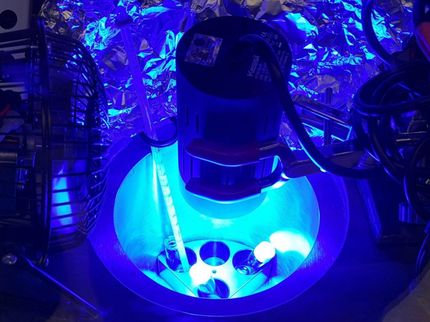Nanorods get even smaller
Scientists in Canada have developed a simple method to control the size of nanorods, making them more useful for catalytic applications.
Scientists have made mesoporous silica nanorods previously using an acidic solution of tetraethylorthosilicate (TEOS) and a polyethylene oxide known as P123. However, to make the nanorods more useful for encapsulating and transporting molecules, a way to make smaller particles is required.
Linda Nazar and colleagues at the University of Waterloo found they could control the size of the nanorods simply by using a more dilute solution of TEOS and P123. They were able to halt the synthesis at an early stage of growth, allowing them to make nanorods far smaller than previously reported. Nazar believes that using a dilute solution minimises the chance of newly formed particles colliding with each other and forming aggregates.
'The method we invented will hopefully initiate a new round of discovery in functional nanosized mesoporous materials with specific high-transport properties,' says Nazar.
Original publication. Xiulei Ji, Kyu T. Lee, Muguette Monjauze and Linda F. Nazar, Chem. Commun., 2008
Other news from the department science

Get the life science industry in your inbox
By submitting this form you agree that LUMITOS AG will send you the newsletter(s) selected above by email. Your data will not be passed on to third parties. Your data will be stored and processed in accordance with our data protection regulations. LUMITOS may contact you by email for the purpose of advertising or market and opinion surveys. You can revoke your consent at any time without giving reasons to LUMITOS AG, Ernst-Augustin-Str. 2, 12489 Berlin, Germany or by e-mail at revoke@lumitos.com with effect for the future. In addition, each email contains a link to unsubscribe from the corresponding newsletter.
More news from our other portals
Last viewed contents
Cornell and BTI receive $1.8 million from National Science Foundation to continue tomato sequence project
GATC Biotech is the first sequencing service provider in Germany with Illumina CSProTM certification
Cooperation between BioVisioN and Roche Diagnostics - Roche Diagnostics is validating new marker candidates for diagnosis of Alzheimer Disease
Sobering-up_station
DuPont, Athenix Collaborate to Advance Insect Control in Corn, Soybeans
DNA duplication: a mechanism for ‘survival of the fittest’
History_of_poliomyelitis
Category:EC_1.16.3






















































